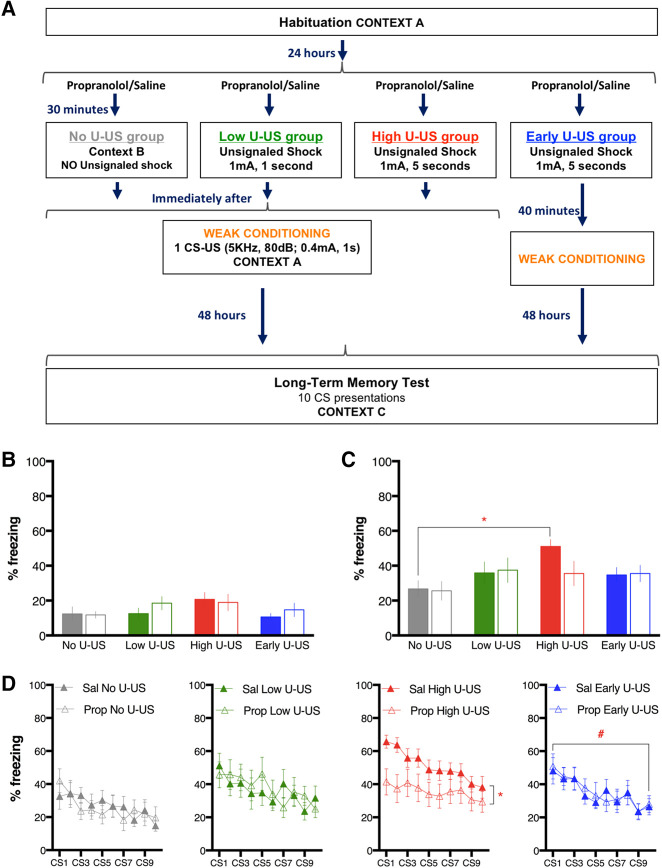Figure 2.
The enhancement of freezing during long-term memory test induced by the preexposure to an unsignaled footshock (U-US) before single-trial weak conditioning is prevented by pretraining propranolol. (A) Schematic of experimental design. On the day following habitation to the conditioning context, animals received propranolol (10 mg/kg: Prop: empty symbols) or saline vehicle (1 mL/kg, Sal: filled symbols) 30 min before placement in a shuttlebox. Three seconds after the beginning of the shuttlebox protocol, rats received either no shock (No U-US: gray), a 1-sec shock (Low U-US: green), or a 5-sec shock (High U-US: red; or Early U-US: blue). All groups were immediately transferred to the conditioning context after offset of the U-US, except for the Early U-US group that instead waited in their home cages for 40 min before conditioning. Conditioning consisted of a single trial of tone–shock pairing with a weak shock (0.4 mA). Forty-eight hours later, an LTM test was done by giving 10 CS-alone presentations in a modified context. (B) Graph showing percentage of freezing (mean ± SEM) during the CS presentation in the conditioning session for each group of animals. Note that this CS is a novel stimulus at this point, not having been paired with shock until the final second of this CS presentation. No significant effects or differences were observed on this measure. (C) Results from LTM test expressed as percentage freezing (mean ± SEM) to CSs averaged across all 10 CS-alone presentations. A main effect of U-US condition was observed, and post hoc testing revealed that Sal High U-US froze more than the Sal No U-US control. (D) Percentage freezing (mean ± SEM) to each CS in the LTM session. A main effect of drug treatment was seen only in the High U-US condition. A main effect of CS presentation was observed only for the Early U-US condition. (*) P < 0.05, (#) P < 0.05 for CS main effect

